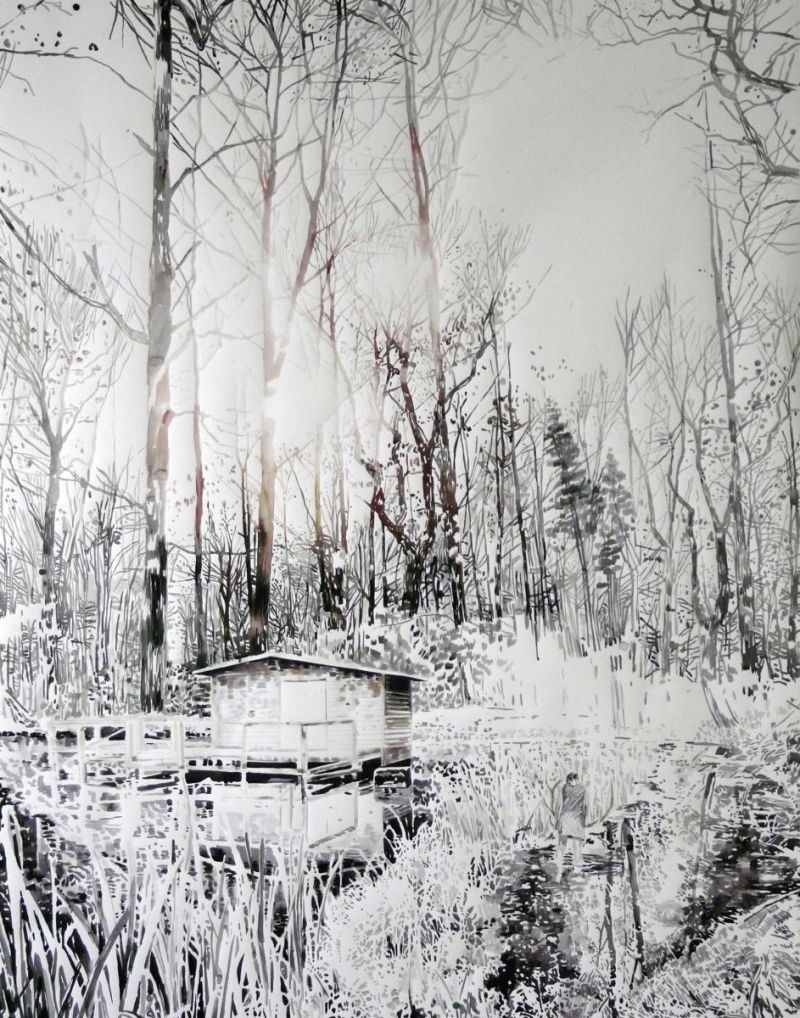Małgosia Jankowska – In the enchanted forest
Mediathek Sorted

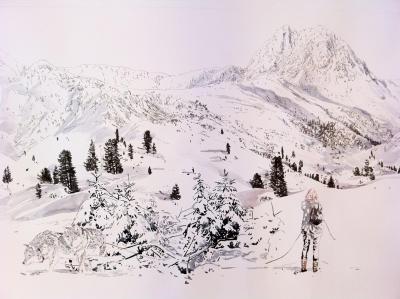
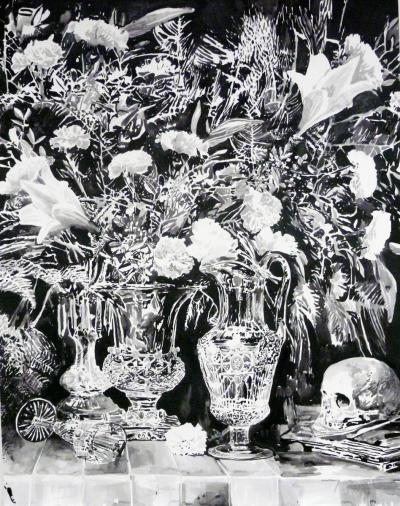


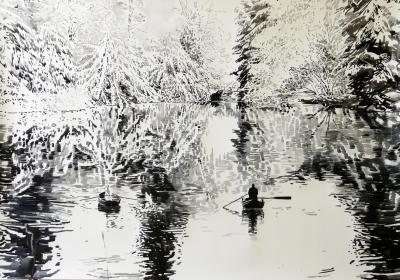
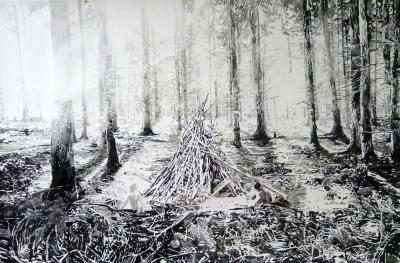

Sometimes a picture can the propel what has been experienced like a shock over white paper. And sometimes not. For some images all it takes is a tiny detail, an almost imperceptible interruption, a short pause to relate the unthinkable. And other pictures speak of great emotions so loud and clear that they can bludgeon with their romanticism. Małgosia Jankowska’s images show no past and nothing that would point to the future, only the somewhat theatrically staged solitude of the forest, which she draws with pencil and felt pen. They capture a brief moment and hold it to get our attention for the present. But which ‘present’ is it?
If we follow the artist’s captions ‘Zauberwald’, ‘Waldlichtung’, ‘Waldsee’, ‘Schwarzwald’ (‘enchanted forest’, ‘forest clearing’, ‘wooded lake’, ‘Black Forest’), then we end up immediately in the world of fairy tales and legends. Małgosia Jankowska’s tall pines and the myth-saturated undergrowth have, nevertheless, none of the cloying romanticism of popular German stories with their hackneyed rhyme ‘Herz’ (heart) with ‘Schmerz’ (pain). Because of their fairy-tale character, the works occupy an opposing place in relation to what really and actually happened yesterday. But the razor-sharp black-and-white drawing that conveys an existentialist basic sense, an abstract space, is also free from the pressures of the political present. It thus takes from the figures hidden between the fern and the moss some of the burden they would otherwise bear. It needs the density of the forest and focused distance. Otherwise, the presence of terror would be unendurable. Just think of Polish forests – the Erzgebirge (Ore Mountains) – as full of wooden chips, the peaks all bald as a result of acid rain. And thus the silent yet powerful giant leaves (up to 190 x 150 cm) succeed in the impossible: to tell with nature of the repression in a tone that sounds as if Adalbert Stifter would have written it, because it sings of spring, summer, fall and winter, ‘satisfying and soul calming’.
The lines of this artist flow as streams of energy in a labyrinthine space of compressed experience. The forest is to her both linear reality and symbolization of the real. She follows the lines to connect the subconscious and her projections with the infinite space of the universe.
Małgosia Jankowska has created drawings and colored leaves that view the beauty of nature patiently. That evil is hiding in the idyll you realize only at a second glance. She hellishly and cleverly selects the tone of Grimm’s Fairy Tales. The lullaby-like and childlike is intertwined with ghostly perspectives.
The German forest delights, the German forest disturbs. There Hansel and Gretel run, and it is only one small step from losing one’s way to losing oneself. Alone among trees we encounter our own fear and sometimes sinister figures: “For in the forest, there are the robbers.”
Even today, the forest is a foreign, dangerous place and the horror is very real. But it also provides shelter and refuge. Far away from the world and very close to God, the modern hermits have prescribed encapsulation. As far back as 1796 the Romantic poet Ludwig Tieck celebrated the forest, celebrated it as a place of out-of-the-world abandonment.
It may be asserted with slight exaggeration that the forest is, if not an invention of German Romanticism, the German soul landscape sui generis.
What goes around, comes around. Sometimes, of course, there are in Małgosia Jankowska’s drawings only the voices of those beasts hiding in or from civilization or the laughter of those elves who make the forest their playground.
Christoph Tannert, March 2016
CV:
1978 / born in Sochaczew / Polen
1998 –2003 / studied painting at the Academy of Fine Art in Warsaw
2001 / visiting student at the University of Arts Berlin, Erasmus scholarship
2003 / Diploma at the Academy oft he Fine Arts in Warsaw
Małgosia Jankowska lives and works in Berlin. Her works are avilable at the Galerie Michael Schultz Berlin.





















































































